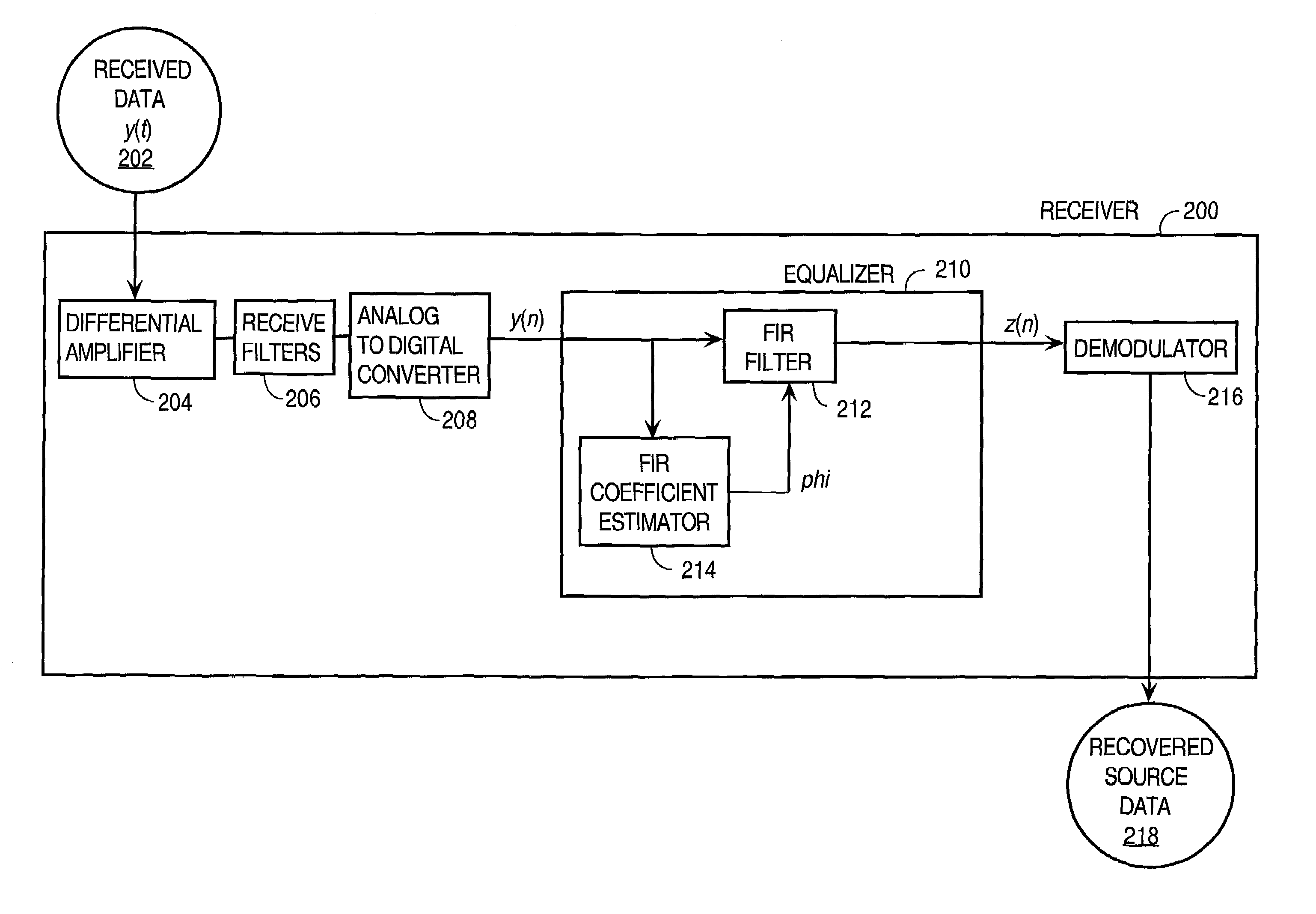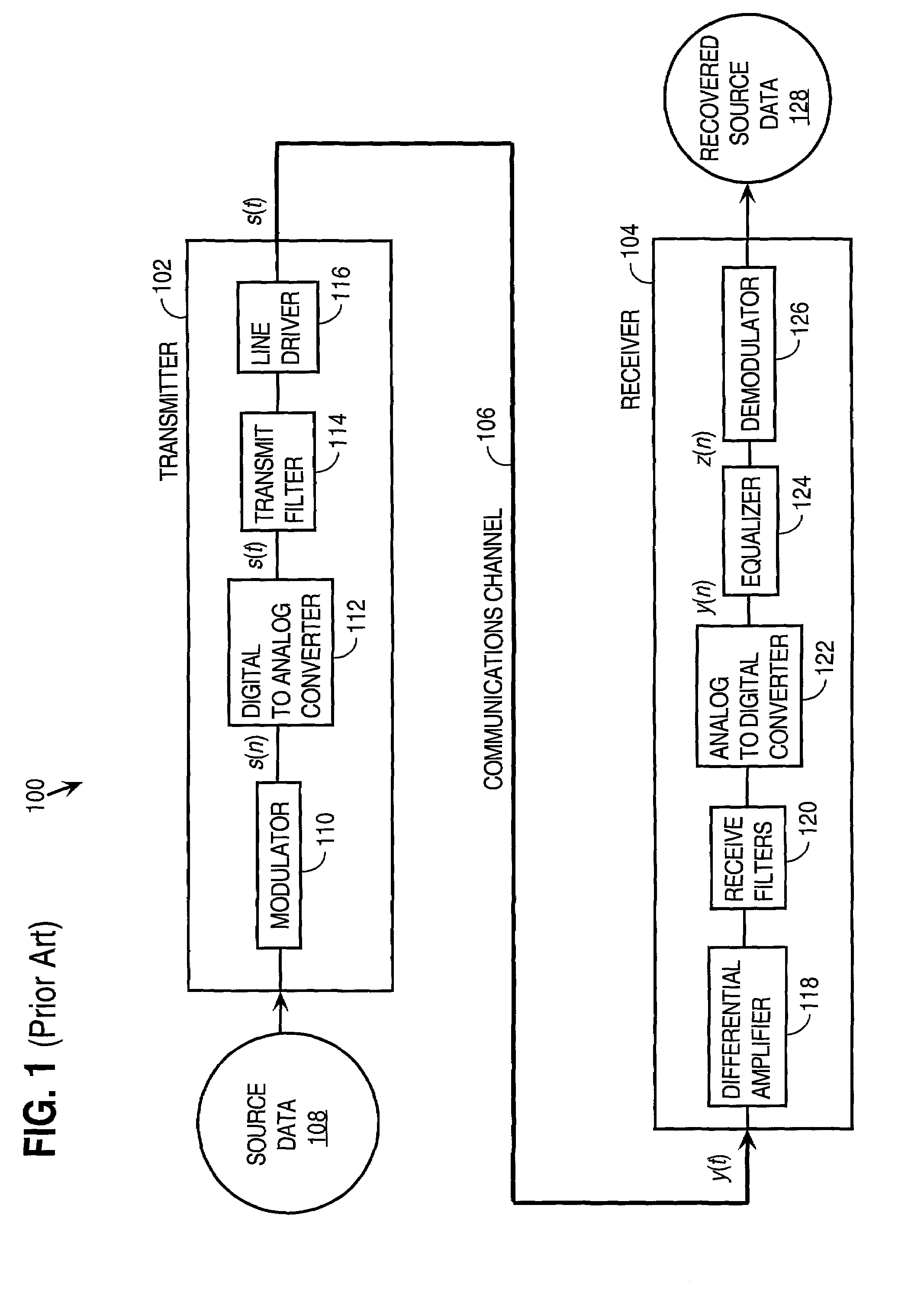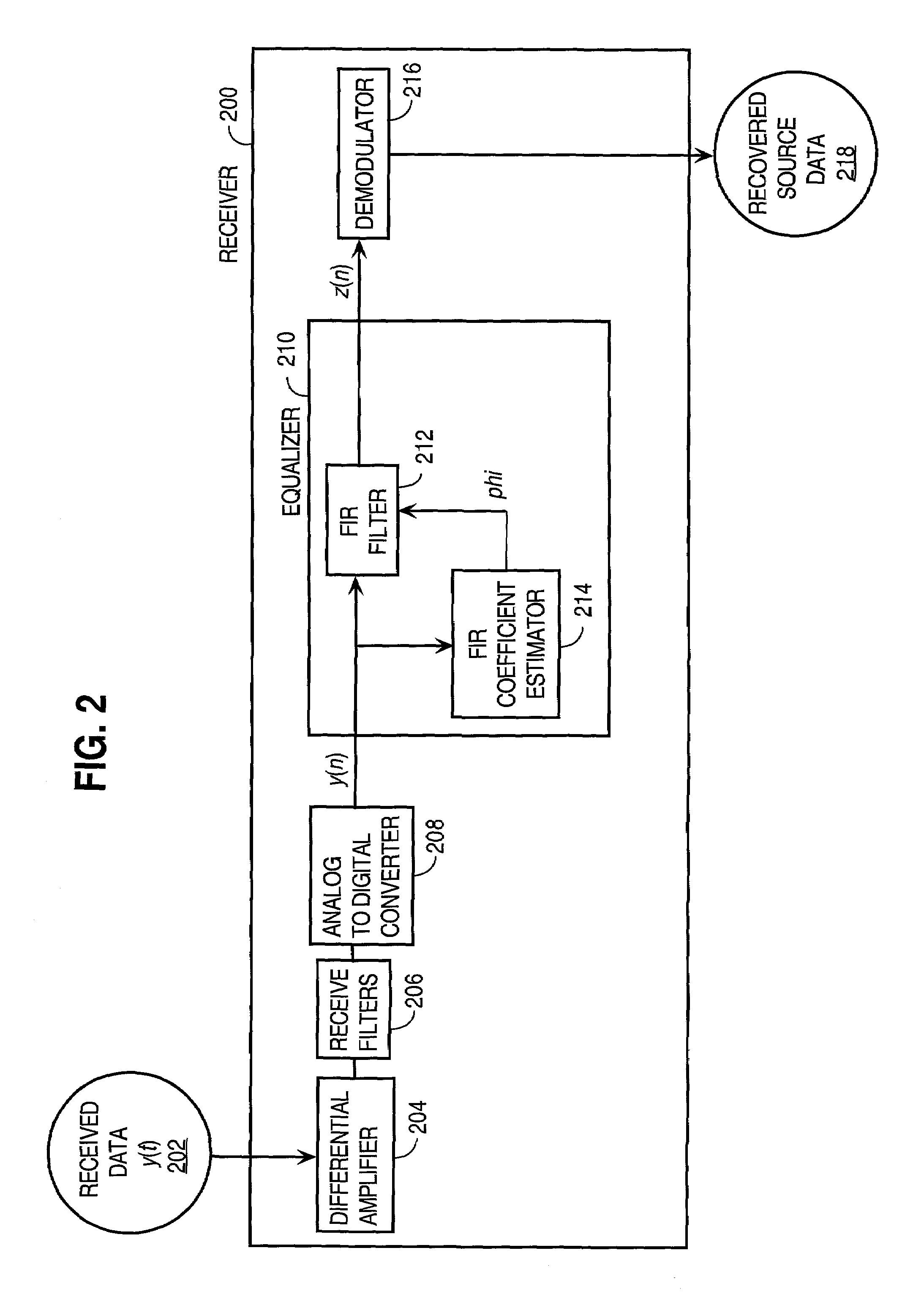Approach for processing data received from a communications channel to reduce noise power and optimize impulse response length to reduce inter-symbol interference and inter-channel interference
a technology of data received from a communications channel and impulse response length, which is applied in the field of digital communication systems, can solve the problems of high cost and time required to develop and build out the new infrastructure required by the system, and the infrastructure is already expensive in many countries, so as to reduce the noise power, optimize the impulse response length, and reduce the inter-symbol interference and inter-channel interference.
- Summary
- Abstract
- Description
- Claims
- Application Information
AI Technical Summary
Benefits of technology
Problems solved by technology
Method used
Image
Examples
Embodiment Construction
[0024]An approach for processing data received from a communications channel to reduce noise power and optimize impulse response length to reduce inter-symbol interference and inter-channel interference is described. In the following description, for the purposes of explanation, numerous specific details are set forth in order to provide a thorough understanding of the present invention. It will be apparent, however, to one skilled in the art that the present invention may be practiced without these specific details. In other instances, well-known structures and devices are depicted in block diagram form in order to avoid unnecessarily obscuring the present invention.
[0025]In the following description, the various functions shall be discussed under topic headings that appear in the following order:[0026]I. Overview[0027]A. Communications System Arrangement[0028]B. Receiver[0029]C. Communications Processing[0030]D. Discrete Multitone Modulation[0031]II. FIR Filtering[0032]III. Theore...
PUM
 Login to View More
Login to View More Abstract
Description
Claims
Application Information
 Login to View More
Login to View More - R&D
- Intellectual Property
- Life Sciences
- Materials
- Tech Scout
- Unparalleled Data Quality
- Higher Quality Content
- 60% Fewer Hallucinations
Browse by: Latest US Patents, China's latest patents, Technical Efficacy Thesaurus, Application Domain, Technology Topic, Popular Technical Reports.
© 2025 PatSnap. All rights reserved.Legal|Privacy policy|Modern Slavery Act Transparency Statement|Sitemap|About US| Contact US: help@patsnap.com



